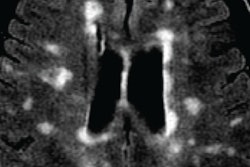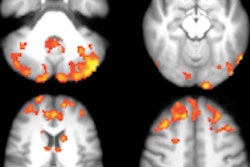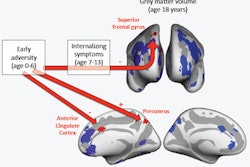MR images are providing encouraging evidence that children with multiple sclerosis (MS) who exercise regularly are more likely to have smaller brain lesions, according to a Canadian study published online August 12 in Neurology.
Pediatric patients with MS who regularly participated in strenuous activities such as running or jogging had a significantly smaller median T2 lesion size than those who did not strenuously exercise, wrote lead author Stephanie Grover and colleagues from the Hospital for Sick Children and other institutions.
While the results suggest that strenuous physical activity could have a protective effect for children with MS, the researchers emphasized that additional longitudinal studies are needed to validate the connection between physical activity, MS symptoms, and disease activity in this patient population.
MS side effects
As many as 75% of children with MS suffer from depression, fatigue, or cognitive impairment, the authors noted. Studies have shown that the disease is more active in children than adults, with more lesion burden and greater frequency of relapse, among other effects (Neurology, August 12, 2015).
While little is known about behavioral approaches for managing pediatric MS, physical activity has been shown to improve cognition and executive function and decrease depression in healthy children and those with chronic illnesses.
To explore a possible correlation between physical activity and MS symptoms, the study team enrolled 110 consecutive patients with either monophasic acquired demyelinating syndrome (mono-ADS) or MS between June and December 2013. Seventy-nine children with mono-ADS and 31 with MS were included in the study; their ages ranged from 5 to 18 years.
Children with mono-ADS have experienced one demyelinating incident but are healthy. This condition was chosen as the comparison group to establish differences with patients with MS, who are prone to relapses.
To measure physical activity, the researchers asked subjects to record how often they participated in various levels of exercise for periods of 15 minutes or more during leisure time over a typical week. The three categories included strenuous exercise, such as running or jogging; moderate activity, such as fast walking; and mild exercise, such as leisurely walking.
The study also assessed fatigue through an 18-part, self-evaluating, symptom-oriented scale based on general fatigue, sleep and/or rest, and cognition. Depression was evaluated using a similar 20-part, self-rated, symptom-oriented pediatric depression scale for children between 6 and 12 years of age. Higher scores in both assessments indicated more severe fatigue and/or depression.
Within the larger study group, 47 children with mono-ADS and 13 with MS underwent MRI using a standardized research protocol on a 1.5-tesla scanner (Twin Speed Excite 12.0, GE Healthcare) to collect data on total brain volume, T1 lesion volume, and T2 lesion volume.
Physical activity frequency
The researchers found that pediatric patients with MS participated in much less strenuous and total physical activity than their study counterparts with mono-ADS. Only 45% of patients with MS (14 of 31 subjects) reported participating in any strenuous physical activity, compared with 82% of children with mono-ADS (65 of 79 subjects).
For those children with MS who did partake in strenuous physical activity, their T2 brain lesions had a median size of 0.46 cm3 at MRI, compared with a median size of 3.4 cm3 for those with MS but no strenuous activity. MS patients with strenuous activity also had a median of 0.5 relapses per year, compared with one relapse per year for subjects with no strenuous activity.
There were no differences between the MS and mono-ADS groups in terms of moderate or mild physical activity. The researchers also found no associations between total brain volume and participation in physical activity. The results were the same after they adjusted for the severity of the children's disease.
Effect on fatigue, depression
As one might expect, fatigue and depression related to physical activity were associated with pediatric MS patients. Overall, a greater proportion of patients with MS had moderate to severe levels of general, sleep/rest, and total fatigue than the patients with mono-ADS.
However, patients with MS who participated in more moderate physical activity had fewer sleep/rest and fatigue symptoms, whereas MS patients with less physical activity registered greater fatigue.
"Given the high correlation between fatigue and depression in our study, and high levels of depression in our patient population (approximately 1/5 of all patients), future studies should examine whether depression decreases through time in children who experience increases in physical activity," the authors wrote.
Grover and colleagues also noted that the cross-sectional nature of the study limited their ability to make any definitive conclusions about relationships between physical activity and fatigue in this patient population.
"Future studies should be oriented toward understanding factors that may influence the complex relationships between physical activity, depression, and fatigue," they added.
The authors cited several limitations of the study, including the possibility of selection bias, given that subjects were selected from the Hospital for Sick Children. However, because the specialized clinic at the tertiary care center covers the greater Toronto area, the chance of this bias is "relatively small."
The group also did not look into gray-matter volumes, which was outside the scope of the study. Previous research has linked fitness in children with greater volumes in regions of the brain associated with cognitive control and memory.
"Future studies focusing on the association of physical activity with gray-matter volume and deep gray structures in children with MS are needed," the authors wrote.



















